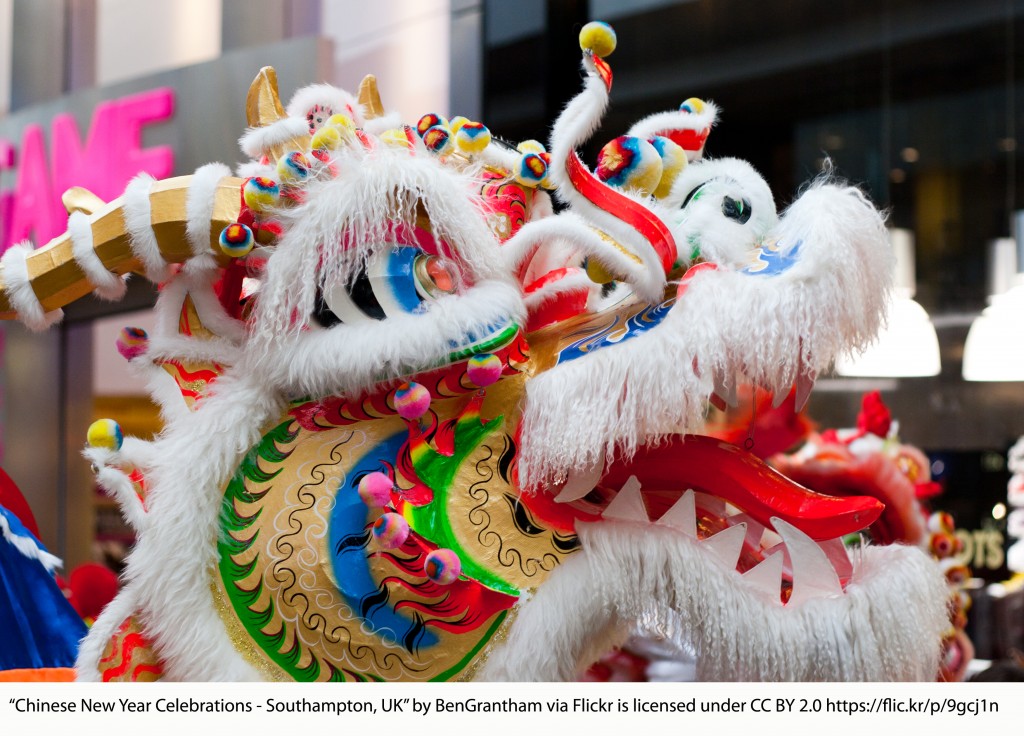
Chinese New Year is almost here! Chinese families around the world are already celebrating this exciting event which lasts for fifteen days. The celebration begins on the night of a new moon and culminates with the Lantern Festival, a celebration that takes place under the light of the full moon. Families join together in the streets carrying lighted lanterns to create a beautiful light display.
Before the Chinese New Year begins, homes are cleaned from top to bottom. The goal is to sweep out ill fortune and encourage the good fortune of the new year to enter. The evening of Chinese New Year is a big event celebrated with traditional feasting and ending with a fireworks display. Each of the fifteen days of Chinese New Year has a special significance: friends and families share traditional feasts, honor ancestors and deities, exchange gifts, visit extended family members, give children red envelopes with good luck money, and enjoy traditional music and special celebrations.
To share this wonderful event with your students, we encourage you to download our free Chinese New Year lesson plan which takes students on a journey through the Chinese New Year by utilizing geography, crafts and discussion. A Venn Diagram is used to help compare similarities and differences between the Chinese New Year and the American New Year. The lesson also includes suggestions for teaching about world geography and population density.
The bilingual children’s book Li’s Chinese New Year is the inspiration for this lesson plan. It introduces students to the Chinese New Year celebrations and ties concepts together in the lesson plan. Not only is the story a highlight for children, teachers can introduce students to Chinese characters in the bilingual English-Chinese version of the book while reading the story out loud in English.
The primary focus of this lesson plan is to help children cultivate an appreciation for cultural and linguistic diversity. Through collaborative activities and discussions, students can build positive relationships with one another while learning to appreciate our world’s global diversity.
Gong Xi Fa Tsai (Mandarin)
Gong Hay Fat Choy (Cantonese)
Wishing You Prosperity!
Are you using this (or a different) lesson plan to introduce your students to the Chinese New Year? Please share your experiences! Or maybe you read your students the book Li’s Chinese New Year? What did your students think of it?
“Chinese New Year Celebrations – Southampton, UK” by BenGrantham via Flickr is licensed under CC BY 2.0 https://flic.kr/p/9gcj1n
This blog post is linked with the monthly iTeachSecond linkup. Be sure to check out other bloggers’ tips, teaching strategies, and resources!


I had so much fun this week reading Li’s Chinese New Year to my son’s second grade class! Before reading it, I told the children that I’d ask them after the story if they could remember some of the Chinese New Year traditions as well as tell me who the most clever animal is and how the 12 animals were chosen (per the legends mentioned by “grandpa” in the story). The kids listened great and hands shot up repeatedly as we reviewed the traditions and legends associated with Chinese New Year. They were proud to know about sweeping the house clean, the red envelopes with lucky coins, the traditional feasts, putting a lucky coin in a dumpling and why RAT was said to be the most clever animal of the zodiac!
[…] traditional dish associated with it. Thanksgiving turkey, curry on Boxing Day, or rice cakes for Chinese New Year… Food is the cornerstone of any […]